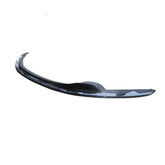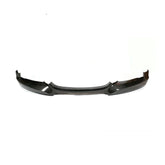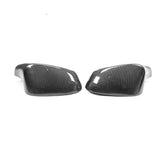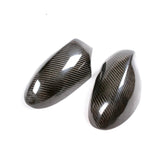The quest for speed and efficiency in automotive performance often leads enthusiasts and engineers alike to focus on engine modifications, aerodynamics, and weight reduction. Yet, one of the less heralded but equally crucial components in this quest is the vehicle's rims. Far from being just aesthetic enhancements, rims play a significant role in influencing vehicle performance. Let's delve into the science behind how rims affect a vehicle's speed and overall performance.

Weight Matters: Unsprung Mass and Rotational Inertia
-
Unsprung Mass: Rims are part of a vehicle's unsprung mass, which includes all components not supported by the suspension (e.g., wheels, tires, brakes). Reducing unsprung mass is pivotal for performance because it allows the suspension to respond more quickly to road irregularities, improving grip and handling. Lighter rims enhance this responsiveness, leading to better acceleration, braking, and cornering abilities.
-
Rotational Inertia: When it comes to acceleration and braking, the concept of rotational inertia becomes critical. Rotational inertia refers to the resistance an object has to changes in its rotational speed. Lighter rims have less rotational inertia, making it easier for the vehicle to increase or decrease speed. This reduction can significantly improve acceleration times and braking efficiency.
Aerodynamics: The Role of Rims in Airflow
-
Airflow Management: The design of a rim can influence a vehicle's aerodynamics. Certain rim designs can help manage airflow around the wheel wells and under the vehicle, reducing drag and improving high-speed stability. Some performance-oriented rims are specifically designed to funnel cool air towards the brakes, reducing brake fade during intensive use.
-
Turbulence Reduction: At high speeds, the wrong rim design can create additional turbulence around the wheels, increasing aerodynamic drag. Performance rims aim to minimize this effect, contributing to smoother airflow and better overall efficiency.
Material Science: The Impact of Rim Composition
-
Alloy Wheels: Alloys made from aluminum or magnesium offer a superb balance of strength and lightness, significantly outperforming traditional steel rims in performance scenarios. Their reduced weight contributes to lower unsprung mass and rotational inertia, while their strength ensures they can handle the stresses of high-speed driving.
-
Carbon Fiber: Emerging as a material for high-performance rims, carbon fiber offers an unmatched strength-to-weight ratio. Though expensive, carbon fiber rims are incredibly lightweight and reduce rotational inertia to a minimum, offering the pinnacle in performance enhancement.
Rigidity and Vibration: Stability at High Speeds
-
Rim Stiffness: The stiffness of a rim contributes to the vehicle's overall stability, particularly at high speeds or during aggressive cornering. Stiffer rims can better withstand the forces exerted during these maneuvers, providing more precise handling and feedback to the driver.
-
Vibration Damping: High-quality rims also offer better vibration damping, which reduces the amount of road noise and harshness transmitted to the cabin. Improved comfort can lead to better driver focus and performance over longer drives.
Conclusion
The influence of rims on vehicle performance encapsulates a wide range of factors, from the physics of unsprung mass and rotational inertia to the nuanced roles of aerodynamics and material science. As automotive technology progresses, the development of rims that offer the perfect blend of lightness, strength, and aerodynamic efficiency will continue to be a crucial focus for manufacturers and enthusiasts aiming to push the boundaries of speed and performance. Whether for competitive racing or the sheer pleasure of driving, the right set of rims can unlock new levels of performance, making them an essential consideration in the science of speed.










